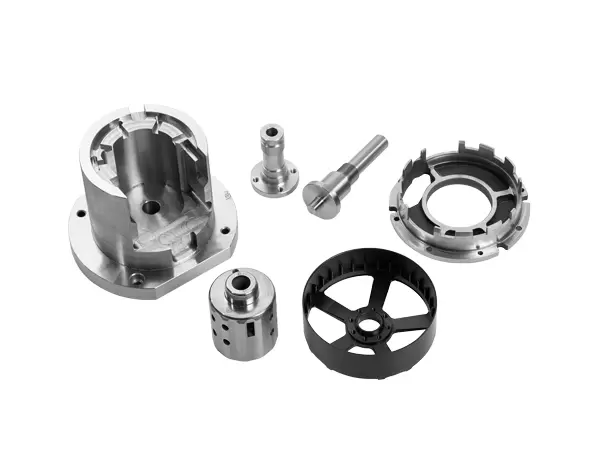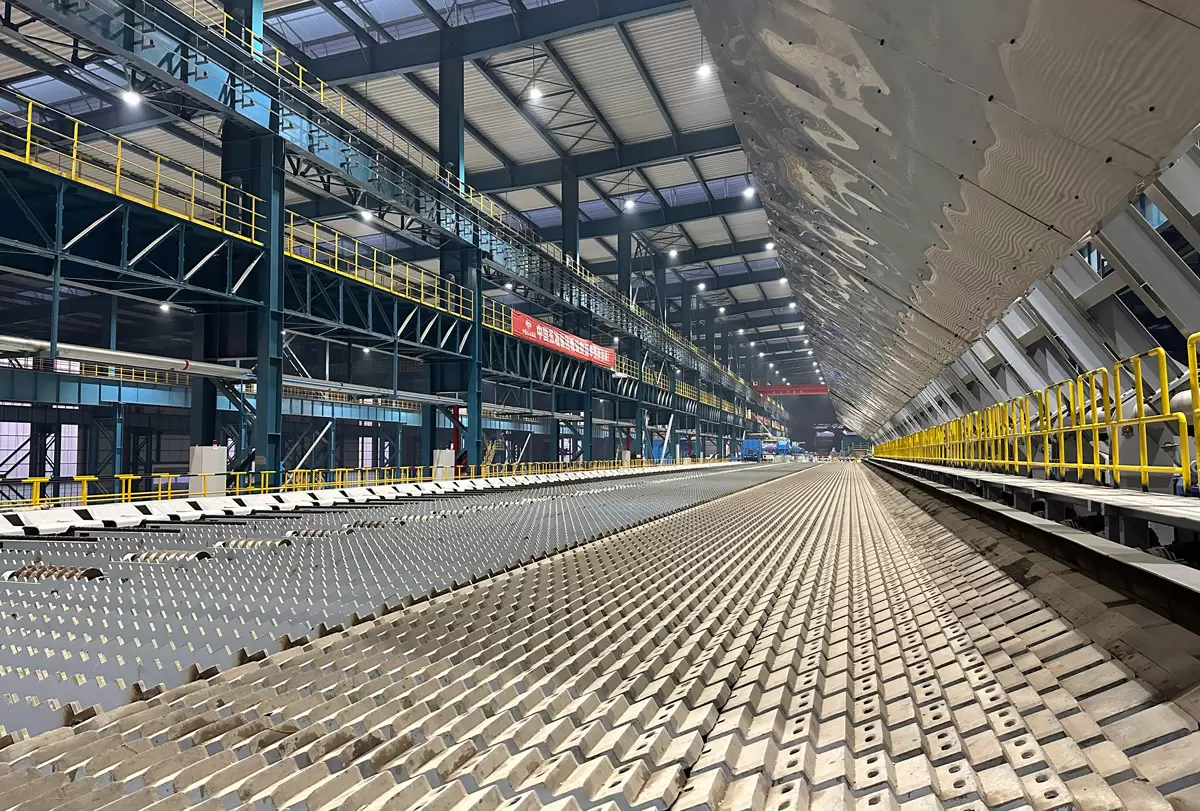Introduction to the Textile Industry
Welcome to the vibrant world of textiles, where colors and patterns come to life! The textile industry has been an integral part of human civilization for centuries, serving as a means of self-expression, cultural identity, and protection from the elements. From the humble beginnings of hand-woven fabrics to the mass production techniques of today, innovation has always driven this ever-evolving industry.
One crucial aspect that revolutionized the textile world is fabric dyeing. Traditionally, fabric dyeing was a laborious process that involved soaking textiles in vats filled with dye solutions. However, thanks to advancements in technology, we now have a game-changer in our hands - the woven fabric dyeing machine! This incredible invention has completely transformed how fabrics are colored and opened up new possibilities for designers and manufacturers alike.
In this blog post, we will explore how woven fabric dyeing machines have evolved over time, their features and benefits, as well as their impact on both the textile industry and the environment. So fasten your seatbelts as we take you on an exciting journey into the realm of innovative fabric coloring methods! Let's dive right in!
The Traditional Process of Fabric Dyeing
The traditional process of fabric dyeing has been a labor-intensive and time-consuming method that has remained unchanged for centuries. It involves various steps, starting with the preparation of the fabric by scouring it to remove any impurities or finishes.
Once the fabric is clean, it is then soaked in a dye bath containing natural or synthetic dyes. The fabric is often agitated manually to ensure even color distribution. After soaking for a specific period, which can vary depending on the desired shade and depth of color, the fabric is rinsed thoroughly to remove excess dye.
Next comes the fixing stage where chemicals are applied to enhance color fastness and prevent fading. The dyed fabric goes through another round of washing and drying before it can be used or further processed.
This traditional process has its limitations. It requires significant amounts of water, energy, and chemicals while also generating large quantities of wastewater containing harmful substances that pollute our environment. Additionally, manual labor involved in this process makes it prone to inconsistencies in color results.
However, advancements in technology have revolutionized this age-old practice with innovations like woven fabric dyeing machines! These machines offer numerous benefits such as reduced water consumption due to their efficient circulation systems. They also allow for precise control over temperature and pressure during each stage of the dyeing process leading to consistent colors every time!
Furthermore, these machines are designed with eco-friendly features such as automatic chemical dosing systems that minimize waste while ensuring optimum use of resources.
With their advanced automation capabilities combined with improved efficiency and sustainability factors woven Fabric Dyeing Machines hold great potential for transforming not only textile manufacturing but also minimizing its impact on our environment!
Woven Fabric Dyeing Machines have come a long way from conventional practices bringing about revolutionary changes in an industry once plagued by inefficiencies and environmental concerns! With their advanced technologies offering better control over processes along with sustainable features they enable manufacturers to produce vibrant colored fabrics while reducing water, energy, and chemical consumption.
The Advancements in Woven Fabric Dyeing Technology
Advancements in woven fabric dyeing technology have revolutionized the textile industry, providing faster and more efficient ways to color fabrics. Traditional methods of fabric dyeing involved lengthy processes that required a significant amount of time, water, and energy. However, with the introduction of new technologies such as the woven fabric dyeing machine, these challenges are being overcome.
One major advancement is the automation of the dyeing process. Woven fabric dyeing machines now have programmable controls that allow for precise temperature and pressure settings, resulting in consistent and high-quality dyed fabrics. This eliminates human error and ensures uniformity throughout production.
Another significant improvement is the reduction in water usage. Woven fabric dyeing machines use less water compared to traditional methods by utilizing innovative techniques such as low liquor ratio systems. This not only saves millions of gallons of water but also reduces wastewater treatment costs.
Additionally, advanced machinery has led to reduced energy consumption during the dyeing process. Energy-efficient heating systems combined with optimized circulation mechanisms help minimize energy waste while still achieving optimal results.
Furthermore, modern technology allows for shorter processing times without compromising on quality or colorfastness. Woven fabric dyeing machines can complete a full cycle in significantly less time compared to traditional methods, increasing productivity and reducing lead times for manufacturers.
The advancements in woven fabric dyeing technology not only benefit textile manufacturers but also have positive implications for the environment. By reducing water consumption and improving energy efficiency, these machines contribute to sustainable practices within an industry known for its resource-intensive processes.
Features and Benefits of a Woven Fabric Dyeing Machine
The woven fabric dyeing machine is a game-changer in the textile industry, offering numerous features and benefits that revolutionize the way fabrics are dyed.
These machines are designed to handle a wide range of fabrics, from delicate silk to heavy denim. This versatility ensures that manufacturers can efficiently dye different types of textiles without compromising on quality.
Another standout feature is the precision and consistency offered by these machines. With advanced technology and automated processes, they can achieve uniform color distribution throughout the fabric, eliminating splotches or uneven patches. This not only improves the aesthetic appeal but also reduces wastage as fewer re-dyeing attempts are required.
Furthermore, woven fabric dyeing machines offer enhanced control over temperature and pressure settings during the dyeing process. This allows manufacturers to experiment with various techniques such as reactive dyes or eco-friendly alternatives like natural plant-based dyes.
Additionally, these machines significantly reduce water consumption compared to traditional dyeing methods. They utilize innovative systems that recycle and reuse water, minimizing environmental impact while also reducing operational costs for businesses.
Moreover, automation plays a crucial role in increasing efficiency and productivity in textile factories. Woven fabric dyeing machines streamline operations by automating essential tasks such as loading fabrics onto rollers or adjusting dye concentrations accurately.
In conclusion, woven fabric dyeing machines have become an indispensable tool for modern textile manufacturing companies due to their impressive features and benefits. By improving quality control, reducing waste and water consumption, enhancing productivity through automation – these machines have transformed the way fabrics are dyed while promoting sustainable practices within the industry.
Impact on the Textile Industry and Environment
The introduction of woven fabric dyeing machines has had a significant impact on both the textile industry and the environment. With their advanced technology and innovative features, these machines have revolutionized the way fabrics are dyed, leading to numerous benefits for manufacturers and the planet.
Woven fabric dyeing machines have greatly increased efficiency in the textile industry. They are capable of handling larger quantities of fabric at once, reducing production time and costs. This means that manufacturers can meet high demand more quickly, resulting in increased productivity and profitability.
Moreover, these machines offer precise control over various parameters such as temperature, pressure, and dye distribution. This level of accuracy ensures consistent color results across different batches of fabrics. It eliminates inconsistencies caused by manual dyeing methods and reduces wastage by minimizing rework or rejects due to color variations.
Additionally, woven fabric dyeing machines use less water compared to traditional dyeing processes. They incorporate innovative technologies like low liquor ratios or circulation systems that enable effective utilization of water resources while maintaining optimal dying conditions. By conserving water during fabrication processes, they help minimize environmental impact by reducing water consumption and wastewater generation.
Furthermore, these modern machines also allow for better chemical management through automated dosing systems. This feature ensures accurate measurements of dyes and chemicals used in each batch while preventing overdosing or underdosing issues commonly associated with manual operations. As a result, it reduces chemical waste discharge into rivers or soil contamination.
Future Outlook and Potential for Growth
The textile industry has always been a dynamic sector, constantly evolving to meet the changing demands of consumers. As we look towards the future, there is immense potential for growth in the woven fabric dyeing machine market.
With advancements in technology and automation, these machines are becoming more efficient and cost-effective. They allow for faster production times and greater accuracy in color application, resulting in higher quality fabrics. This increased efficiency not only improves productivity but also reduces waste, making it an environmentally sustainable option.
Furthermore, as consumer preferences continue to shift towards sustainable and eco-friendly products, the demand for textiles dyed using eco-friendly processes will only grow. Woven fabric dyeing machines offer solutions that minimize water consumption and chemical usage while achieving vibrant colors.
In addition to their sustainability benefits, these machines also provide customization options. With digital printing capabilities, manufacturers can create unique designs on-demand without the need for excessive inventory or long lead times. This flexibility allows businesses to stay ahead of trends and cater to individual customer preferences.
As emerging markets embrace industrialization and global trade expands further, there will be a rise in demand for textile products worldwide. Woven fabric dyeing machines will play a crucial role in meeting this growing demand by enabling mass production with consistent quality control.
In conclusion, the future outlook for woven fabric dyeing machines is promising. Their technological advancements combined with their environmental sustainability make them an attractive investment for textile manufacturers looking to enhance productivity while minimizing their ecological footprint.
Conclusion
The introduction of woven fabric dyeing machines has revolutionized the textile industry. These advanced machines have brought significant improvements in terms of efficiency, productivity, and sustainability.
The traditional process of fabric dyeing was labor-intensive and time-consuming. It involved multiple steps and required a large amount of water and chemicals. This not only increased production costs but also had a negative impact on the environment due to wastewater pollution.
However, with the advancements in woven fabric dyeing technology, manufacturers can now enjoy several benefits. The automated operation reduces manual labor, resulting in higher productivity and lower production costs. The precise control over temperature, pressure, and chemical dosage ensures consistent color quality throughout the fabric batch.
Moreover, these machines are designed to minimize water consumption by recycling and reusing it during the dyeing process. This significantly reduces water waste while maintaining high-quality results.
The impact on both the textile industry and the environment is substantial. Manufacturers can optimize their production processes by saving time, reducing costs, and meeting customer demands more efficiently. At the same time, using woven fabric dyeing machines helps reduce environmental pollution by minimizing water usage and chemical discharge.
Looking ahead to the future of this technology in textiles manufacturing sector; we can expect further advancements that will continue to improve efficiency while reducing environmental footprint even further.
Manufacturers will likely invest more in research and development to enhance automation capabilities for seamless integration into their existing production lines.
ALEETEX
aleetex@aleetex.com




